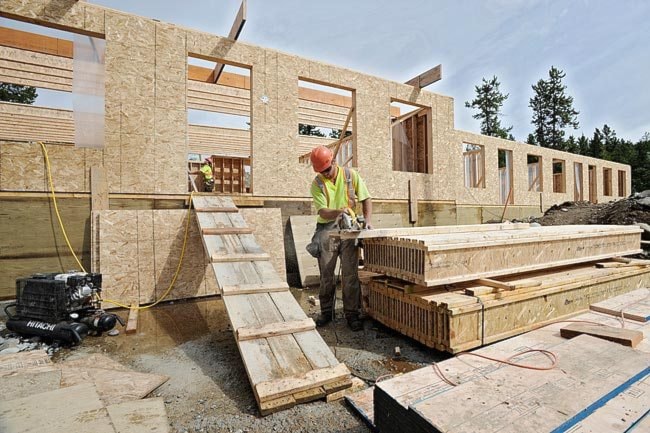By the time you hear a politician say “housing crisis,” it’s already too late. It will take years to build the houses and apartments needed right now.
Housing is one of those issues that does poorly in our system of government. It’s complex, immune to quick fixes and requires both big investment and long-term planning.
Consider some of the root causes of housing problems. The first is timing.
When prices go up, it takes years to acquire land and build units. A few years later, too many people have built too many units and there’s a glut.
For bigger projects, the timeline is even longer and more uncertain.
Whitehorse lots planned during the first pipeline mania in the 1970s weren’t occupied until 20 years later. It’s a recipe for boom and bust.
Second, there are a bunch of biases to building larger, more expensive units.
In 1950, the average home in North America was 1,000 square feet. This had doubled by 2000, despite the number of people in the average household falling from four in 1950 to 2.5 in 2006.
Also, the quality and cost per square foot has gone up, thanks to modern conveniences, better insulation and safety features. People like larger houses and developers make more money building them. Governments like to show how green and safety conscious they are by layering on new building codes and regulations. This may all be good stuff, but it drives cost per unit up.
The third, and thorniest, issue is unintended consequences.
Housing has lots of policy traps. If you build large apartment blocks to get a low cost per unit, you get nightmarish “projects” like in Detroit.
If you regulate rents, landlords stop investing in new units.
If you provide too much government housing, it’s expensive for taxpayers and reduces private incentives to invest in housing. A plethora of US government housing schemes were at the heart of the recent financial crisis.
So what would an economist suggest?
Let’s look at three things: cheaper units, variablizing supply and making the price mechanism work.
A bunch of things are needed to reduce the cost per unit. A review of zoning and building code regulations has to be done to identify things that bias the system against smaller, cheaper houses.
This doesn’t mean throwing the environmental and safety improvements of the last 30 years out the window. It means identifying those regulations that have low benefits, but constrain new developers as well as granny suites.
It also means figuring out how to develop new lots more cheaply.
It is staggering that it can cost more to buy a new empty lot now than an entire house 15 years ago.
People often suggest letting private developers buy land from the government and put in the streets and sewage systems. But this won’t fully work unless we think again about how we design subdivisions.
My hypothesis is that the big lots, wide roads and other fine infrastructure we put into today’s subdivisions would look different if we were really trying to achieve lower costs per lot.
“Variablizing supply” means moving towards a market where there can be small additions to the housing stock rather than once-in-a-generation mega-developments. It probably means we should have been pushing harder five years ago to open up more infill and 10-lot parcels every year.
We should also have been encouraging more basement suites and laneway housing (that’s putting a small unit in your backyard).
This would have allowed people to add supply in small amounts as prices began to rise.
As a result of our slow response, average house prices have more than doubled since 2005 and vacancy rates have fallen from three or four per cent to a very tight one per cent.
As for unintended consequences, you want to avoid rent controls and open-ended subsidies. These blunt the price signal and are usually bad in the long run. Instead, if the government wants to encourage certain things, then find targeted, time-limited ways to spend tax money.
For example, let people pay market rents (which encourage new construction), but subsidize low-income families on a monthly basis during boom years. Instead of subsidizing all house construction, for example, ask developers to come forward with affordable housing proposals.
Tell them they would have to lock rents at today’s median rent of $785 per month, and ask them how much subsidy they’d need to do so. Then choose the cheapest proposals that come forward (assuming they meet housing standards of course).
You’ll see that there is no “silver bullet.” Just lots of “steel rivet” initiatives that multiple levels of government need to co-operate on.
If the next government - of whatever party - is to be successful on housing, it will have to co-ordinate a coherent program across many departments and also with municipalities, First Nations and the feds.
It’s also critical to get started yesterday, due to the long lead times. October frosts may chase away the housing protest tents on the legislature’s lawn, but the housing crisis won’t disappear so quickly.
Keith Halliday is a Yukon economist who writes a weekly column for the Yukon News called Yukonomics.
